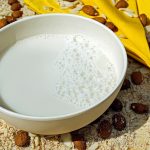The first part of the title of this article is borrowed from the wonderful and unique side-scrolling webpage by AO.com. It tells the story of a grocery shopping tour and offers tips on how you can prevent food waste and save money. The interactive tour is definitely worth a look.
Similarly as this webpage, this article aims to provide tips on preventing food waste, but based on our own personal experience. At home we have practically eliminated any kind of food waste. So follow us on our daily shopping and cooking tour to learn some simple tips and tricks.
8 Ways To Prevent Food Waste
- Shopping ListBefore we go shopping we create a list with the products that we need, and don’t buy anything else.
- No Value Packs
We avoid them at all costs. Typically, we end up spending more money than we would have just buying that one item on the list. Also they are usually heavily over-wrapped, and they bear a huge potential for food waste. - Leftovers
We try to avoid leftovers by reducing the amount we cook and always eating up our plates. And if there are left-overs, we just finish them up the same or next day, before we start to cook something new. Freezing is also always an option. - Daily Shopping
We find it rather difficult to plan a whole week worth of meals, so we do our shopping every day, or at least every other day, without much planning. Shopping by necessity rather than prophylactically. - Simple Meals
Cooking complex meals by recipe force us to buy very specific and rare ingredients that cannot easily be used for anything else. Buying that exact required amount is usually not possible and so we end up having leftover ingredients. Therefore we prefer simple cooking, without recipes. We make a lot of salad or stir fried veggies with whatever we have. - Smarts Foods
Nuts, seeds, beans, grains, cereals, dried fruits, curry, any many other foods, are long-lasting and versatilely usable. We always have them on stock for quick snacks or for cooking. They are also great in smoothies and soups. - Storage
We store most foods in the refrigerator, or in empty glass jars. Appropriate storage is important to avoid rotting. Our fridge is usually quite empty due to our daily shopping habit and vegan diet, so there is always some space. - Inedible PartsThere’s so many myths out there about which parts of certain foods are supposedly inedible. Broccoli, cauliflower and mushroom stems? Orange, tangerine and lemon pith? Apple, grape and melon seeds? Potato, carrot or radish skin? Budding garlic or onions? We eat them all. The best thing is that those parts are usually the healthiest ones. There’s probably thousands of myths, these are just some of the ones we know of. Surely this is not such a big issue, but if you add it all up together, there’s still quite some waste.


